Themed collection Analysis of nanomaterials by FFF- and single particle ICP-MS

Analysis of nanomaterials by field-flow fractionation and single particle ICP-MS
Björn Meermann and Francisco Laborda introduce this themed issue on field-flow fractionation and single particle ICP-MS for the analysis of engineered and natural nanomaterials.

J. Anal. At. Spectrom., 2015,30, 1226-1228
https://doi.org/10.1039/C5JA90019K
Comparative study of granitic and sedimentary groundwater colloids by flow-field flow fractionation coupled with ICP-MS
Size and composition of colloids in deep groundwater obtained from granitic and sedimentary formations were analyzed by flow-field flow fractionation combined with UV/Vis, fluorescence detectors and ICP-MS.

J. Anal. At. Spectrom., 2015,30, 1229-1236
https://doi.org/10.1039/C5JA00088B
First steps towards a generic sample preparation scheme for inorganic engineered nanoparticles in a complex matrix for detection, characterization, and quantification by asymmetric flow-field flow fractionation coupled to multi-angle light scattering and ICP-MS
Engineering nanoparticles in complex matrices.
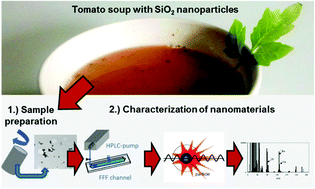
J. Anal. At. Spectrom., 2015,30, 1286-1296
https://doi.org/10.1039/C4JA00471J
Single particle ICP-MS combined with a data evaluation tool as a routine technique for the analysis of nanoparticles in complex matrices
spICP-MS measurement with a powerful data evaluation tool is presented as a fast, cost efficient and easy to use screening tool for metal and metal oxide NPs in complex matrices.
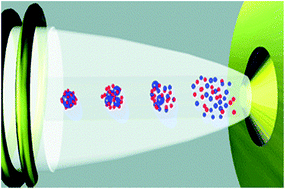
J. Anal. At. Spectrom., 2015,30, 1274-1285
https://doi.org/10.1039/C4JA00357H
Quantitative characterization of silica nanoparticles by asymmetric flow field flow fractionation coupled with online multiangle light scattering and ICP-MS/MS detection
A reliable and sensitive analytical method for the simultaneous determination of size and mass concentration of silica nanoparticles sized 20–200 nm.
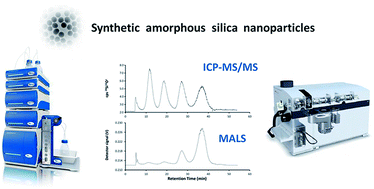
J. Anal. At. Spectrom., 2015,30, 1266-1273
https://doi.org/10.1039/C4JA00478G
Detection, quantification and derivation of number size distribution of silver nanoparticles in antimicrobial consumer products
AF4-ICP-MS for determination of size distribution of silver nanoparticles.
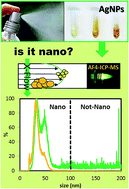
J. Anal. At. Spectrom., 2015,30, 1255-1265
https://doi.org/10.1039/C4JA00410H
Calibration of single-particle inductively coupled plasma-mass spectrometry (SP-ICP-MS)
Incomplete vaporization and non-linear detector response in pulse counting mode cause non-linearity in single-particle ICP-MS.
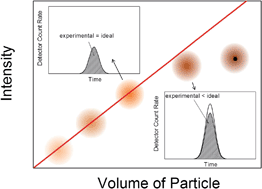
J. Anal. At. Spectrom., 2015,30, 1245-1254
https://doi.org/10.1039/C4JA00408F
Accumulation and biotransformation of chitosan-modified selenium nanoparticles in exposed radish (Raphanus sativus)
Biotransformation of chitosan-modified SeNPs (CS-SeNPs) in radish plants was investigated by using high performance liquid chromatography (HPLC) and asymmetrical flow field flow fractionation (AF4) on line coupled to inductively coupled plasma mass spectrometry (ICP-MS) as well as TEM.
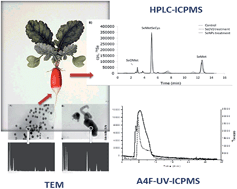
J. Anal. At. Spectrom., 2015,30, 1237-1244
https://doi.org/10.1039/C4JA00407H
About this collection
Guest Edited by Björn Meermann and Francisco Laborda this themed issue showcases the current state-of-the-art of ICP-MS, either in combination with field-flow fractionation or in single particle mode, for the analysis of engineered and natural nanomaterials.
Also see our related collection, '5 years of nanomaterial analysis by means of ICP-MS'